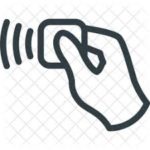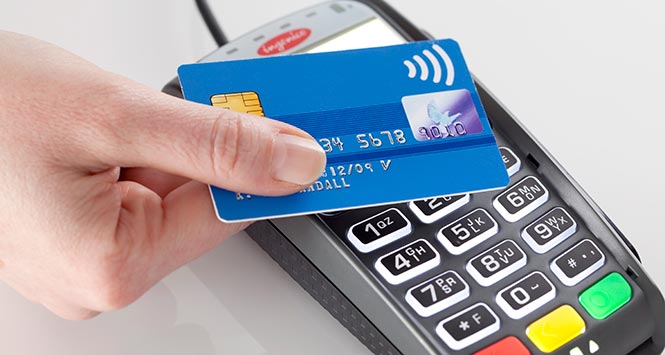Contactless cards are enabled to purchase products or services via debit, credit or smart cards. The contactless cards used the existing RFID technology or near-field communication (NFC) for making transaction through tapping of their card near a point-of-sale (PoS) terminal.
Using contactless card at merchant outlets are an easy and simplest approach. Contactless cards can be used for payment at merchant outlet following the below steps: (Existing process flow at various merchant counter using SBI, Axis, IDBI, Kotak etc. bank card).
Read : Contactless Cards – Complete Details & Payment Transaction Flow Guidelines
Contactless Debit cards contains a chip and an integrated antenna (based on RFID technology). When you tap the card against a contactless enabled terminal, the details get transferred wirelessly from the card to the terminal and the payments get processed in a secure manner. Contactless technology uses secure encryption (the same as CHIP and PIN).
- This card can be used at all such merchant outlets which are showing contactless symbol
 or VisaPaywave Logo
or VisaPaywave Logo or master Paypass
or master Paypass  on POS terminal.
on POS terminal. - Request merchant for contactless payment. Merchant will fill the billing amount in the terminal which will be displayed to you for verification.
- Tap or bring Contactless card near to terminal for at least 30 seconds. Contactless cards and machines do not work beyond a distance of 4 cms.
- Once it echoes a beep sound and/or blue light blinks on the terminal, take the card closer to the contactless POS terminal.
- Terminal will beep and/ or display four green lights and your transaction is complete. You can then remove your card.
- Customer can ask for physical receipt for payment
The same card can be used for the swapping and other purposes. If the volume of transaction is more than Rs 2000, then customer will have to use it like a regular debit card by either dipping (or swiping) it in the machine and you will also be asked to enter the PIN.
Contactless Card – Costing
There is an incremental cost to merchants to accept contactless payments. The actual expense is dependent upon the merchant’s existing infrastructure and its choice of contactless acceptance solution, for example: peripheral or integrated.
The same POS terminal can be set up to accept payment from all American Express Pay, Discover Network, MasterCard Pay Pass and Visa Contactless cards and devices; implementation will depend on the payment brands accepted by the merchant.
There is an incremental cost for a contactless payment card, with the cost driven by the card volume and design. Alternative form factors, such as fobs and mini cards, are typically more expensive than contactless cards but also depend on quantity, design and packaging. Card vendors can provide more information about the cost of contactless cards and devices.
Retailer Cost
- Cost to upgrade existing/New POS
- Cost to upgrade retailer host system
- Cost to train service staff
- Transaction fees
- Maintenance and management cost
Issuer Cost
- Cost of contactless payment device
- Maintenance of life cycle management cost
- Operational cost cum risk profile of contactless payment
- Transaction processing infrastructure cost
- Cost of training staff, promotion and advertisement
Issuer Benefit
- Cashless market
- Increase customer transaction volume
- Improve customer retention and loyalty through ease in payment
- Co-branding opportunity with retailers
Read : What is Contactless cards | Are Contactless cards safe ? | How Do Contactless Card Works ?
